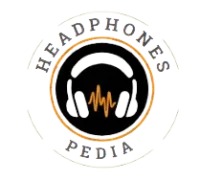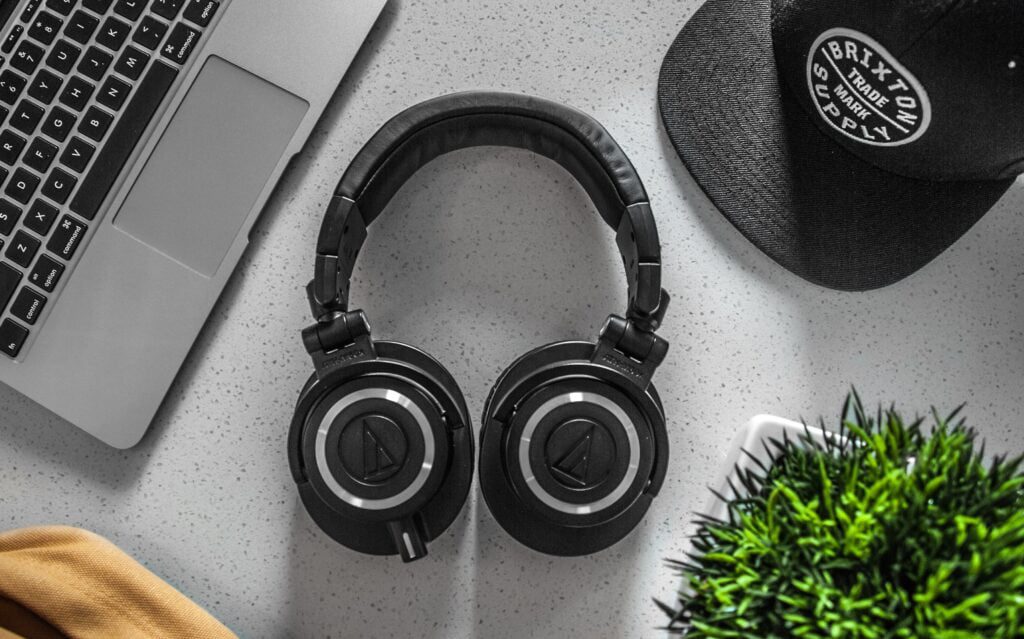If you’re wondering, “Why my wired headphones keep cutting out” this comprehensive guide has the answers you need. Learn the reasons and solutions to ensure uninterrupted audio bliss. Well in short I think the problem lies in the maintenance of the gadget, because most of the time you are using twisted wires, or you don’t store them in the proper place to avoid dust and moisture. As a result, the problem occurs and when you are trying to enjoy the music instead you start getting frustrated.
Introduction
Wired headphones have been a trusty companion for music lovers and podcast enthusiasts for years. However, an issue that frequently plagues users is the frustrating experience of audio interruptions. You’re in the groove, enjoying your favorite tunes, and suddenly, the music stutters, or one ear goes silent. So, why do your wired headphones keep cutting out, and how can you fix this annoyance?
In this article, we delve into the intricacies of headphone hiccups, exploring ten engaging aspects of this issue, from common causes to troubleshooting tips. If you’re ready to reclaim your audio experience, read on.
Why My Wired Headphones Keep Cutting Out
It’s essential to understand the root causes of this problem before seeking solutions. Let’s explore why your wired headphones may be giving you trouble.
1. Damaged Cables
The most common culprit behind audio dropouts is damaged cables. Over time, wear and tear can lead to exposed wires or frayed connections. This can disrupt the audio signal and cause intermittent cutouts. Well, you can replace the wires easily by yourself or you can get them to a repair shop.
2. Dirty or Loose Connectors
Dirty or loose connectors can also result in audio interruptions. Dust and debris can accumulate inside the headphone jack or plug, preventing a secure connection between your device and headphones. As I said before most of the time it is because of no maintenance, So whenever you use them first clean the jack and also try to clean the port with earpicks.
3. Device Compatibility
Not all devices are created equal, and this extends to headphone compatibility. Different devices may have varying impedance levels, which can lead to intermittent audio problems when mismatched. So before buying always read the packaging mostly it is mentioned on the box about the compatible devices.
4. Interference
External interference from electronic devices or radio signals can interfere with your headphone’s signal transmission. This interference can manifest as audio dropouts or static.
5. Overheating
Headphones, especially in-ear types, can overheat during prolonged use. This excess heat can damage internal components and cause audio disruptions.
6. Software Glitches
Sometimes, it’s not a hardware issue but a software glitch causing your headphones to cut out. Compatibility issues, driver problems, or firmware bugs can all play a part.
7. Cable Tension
Excessive tension on the headphone cable, such as pulling or tugging, can damage the internal wires or connectors, leading to audio interruptions.
8. Environmental Factors
Extreme temperatures, humidity, and exposure to moisture can affect the integrity of your headphones, causing sporadic audio problems. This is one of the main causes that sometimes the headphones you are using may be of cheap quality and not designed to withstand the temperature you are in.
9. Aging Headphones
Lastly, like all electronic devices, headphones have a lifespan. Over time, components may deteriorate, resulting in audio dropouts. So Robert please through your father’s headphones which he was using with the iPod.
How to Fix Headset Crackling on PS4 Controller: A Simple Solution
First things first, this solution is for headsets connected directly to your PlayStation 4 controller. If you’re using wireless or optical headsets, this might not apply.
So, here’s what I did: I reset my PS4 controller. Surprisingly, I didn’t even know you could do this until I looked into it. Here’s a step-by-step guide.
Resetting Your PS4 Controller:
- Grab your PS4 controller.
- You’ll need something small, like a needle. (Just don’t tell my girlfriend I borrowed one from her sewing collection!)
- Look at the back of your controller near the screw; you’ll see a small hole.
- Carefully insert the needle or similar object into the hole.
- Hold it in there for a few seconds.
- Remove the needle, and you’ll notice the light on the controller goes off.
After doing this, I also reset my PS4 itself. When everything powered back up, I plugged in my headset, and the crackling was gone. It worked like a charm. I had to reset the controller again the next day when the issue recurred, and it resolved the problem once more. So, if you’re experiencing headset issues, give this a shot.
If this doesn’t do the trick for you, don’t worry. Here are some other troubleshooting steps to consider:
Additional Troubleshooting Steps:
- Check for Interference: Ensure no other wireless devices are interfering with your PS4 controller’s Bluetooth signal. Move devices around or change your sitting position if necessary.
- Adjust Distance: Experiment with different distances from your PS4. Sometimes, proximity can affect connectivity.
- Cable and Headset: Swap out your cables or even try your headset on a different device to rule out cable or headset issues.
Troubleshooting can be a bit of a trial-and-error process, but it’s worth it to identify the root cause of your problem.
How to Fix Audio Issues on Windows 10: A Step-by-Step Guide
So, here’s the issue I was facing: my audio was acting up, similar to what you might be experiencing. It would occasionally glitch out, sound distorted, and even skip frames. It was driving me crazy! But this method worked for me, and it might just work for you too.
Let’s get started:
- Access Device Manager: First, press the Windows key + X, or if you prefer, right-click the Start button to bring up the same menu. Then, click on “Device Manager.”
- Locate Your Audio Device: In Device Manager, scroll down and find the “Sound, video, and game controllers” section. Look for “Realtek High Definition Audio” or a similar name if you’re using a different audio device.
- Uninstall the Driver: Right-click on your audio device, and select “Properties.” Don’t worry about the warning; it’s not an issue. In the Properties window, go to the “Driver” tab and click on “Uninstall Device.” Be prepared for a temporary loss of audio.
- Download the Driver: Now, you’ll need to download the correct driver. Check the video description or follow my instructions here. Visit the official Realtek website and download the “High Definition Audio Codecs.” Accept the terms and conditions and select the appropriate version for your system.
- Install the New Driver: Once the download is complete, run the installation file. If a command prompt window pops up, grant it access. Follow the installation instructions.
- Reboot Your System: After the installation is finished, it’s essential to reboot your computer to ensure the changes take effect.
And that’s it! Your audio should now be back to normal, just like mine. No more glitches, no more frame skips—just smooth sound.
How to Fix Mac Headphones Jack Not Working! One Side Working
We’re tackling a common problem that many MacBook Pro users have encountered: headphone issues. Whether it’s one side not working or your headphones just not connecting properly, it’s a frustrating problem to deal with. But don’t worry; we’ve got solutions for you.
Let’s dive into the troubleshooting steps to help you get your headphones working perfectly with your MacBook Pro.
1. Check Your Aux Cable:
If you’re using wired headphones with an aux cable, start by swapping out the cable. Sometimes, a faulty cable can cause issues. Try a new one and see if that resolves the problem.
2. Test with Different Headphones:
If changing the aux cable doesn’t work, try using a different set of headphones with your MacBook Pro. This step helps determine if the issue is with the headphones themselves or your MacBook.
3. Adjust Sound Balance:
For those experiencing one side of the headphones not working correctly, here’s a MacBook setting you can check. Connect your headphones, click on the Apple logo, go to “System Preferences,” and select “Sound.” Under the “Output” tab, you’ll find a balance option. Ensure it’s set to the middle position. Sometimes, imbalanced settings can cause audio issues.
4. Clean you’re Ports:
Dust and debris can accumulate in your headphone jack or headphone port, causing connectivity problems. Use a microfiber cloth or a tiny bit of rubbing alcohol to clean them. You can also try gently inserting a cotton bud and twisting it to remove dirt.
5. Select the Correct Output:
In the “Sound” settings, make sure your headphones are selected as the output device. This step ensures that the MacBook is directing audio through your headphones.
6. Hardware Check:
If you’ve tried all of the above steps and your headphones still aren’t working, there may be a hardware issue with your MacBook’s headphone jack. In such cases, it might be best to consult with a professional or consider using wireless headphones as a workaround.
By following these steps, you should be able to diagnose and potentially resolve the headphone issues you’re facing with your MacBook Pro. Remember to test your headphones with other devices to rule out any problems with the headphones themselves.
FAQs
Q1: Why do my headphones work fine on one device but cut out on another?
Different devices can have varying impedance levels and compatibility issues, leading to audio disruptions. It’s crucial to ensure your headphones are compatible with the device you’re using.
Q2: Can I prevent cable damage in my headphones?
To prevent cable damage, avoid excessive pulling or tugging on the cable, and consider using cable management techniques such as coiling and securing the cable properly.
Q3: Is it safe to use my headphones in extreme weather conditions?
Extreme temperatures and humidity can damage headphones. It’s best to use headphones within the recommended temperature and humidity ranges specified by the manufacturer.
Q4: How can I update headphone firmware to fix software glitches?
Check the manufacturer’s website or user manual for instructions on updating your headphone’s firmware. Follow the provided steps to resolve software-related issues.
Conclusion
The frustration of wired headphones cutting out can disrupt the joy of music or the immersion of a podcast. Fortunately, understanding the underlying causes and employing some troubleshooting tips can help you overcome this issue.
Whether it’s damaged cables, dirty connectors, or compatibility concerns, you now know how to diagnose and potentially fix the problem. Remember to handle your headphones with care, keep them clean, and ensure compatibility with your devices.
By following these guidelines, you can bid farewell to audio interruptions and enjoy uninterrupted audio bliss with your wired headphones. So, the next time someone asks, “Why do my wired headphones keep cutting out” you’ll have the answers and solutions at your fingertips.

I am Michael a Texas-based recording engineer and sound enthusiast. I contribute to Headphones Pedia’s efforts to educate readers about intriguing new devices and other audio-related issues by drawing on their experience working on several sound projects. I also use AI tools to assist with content creation.




